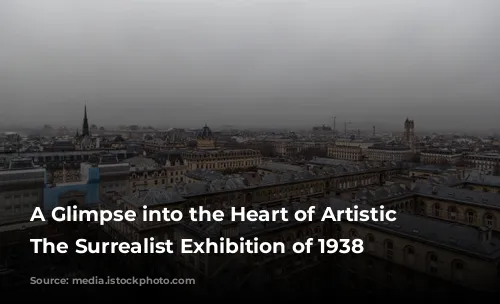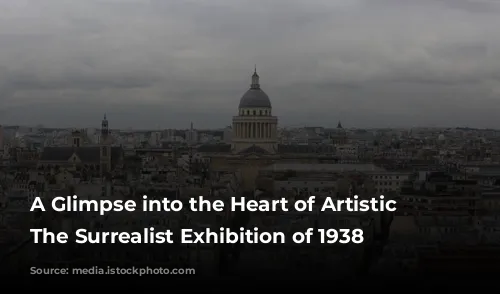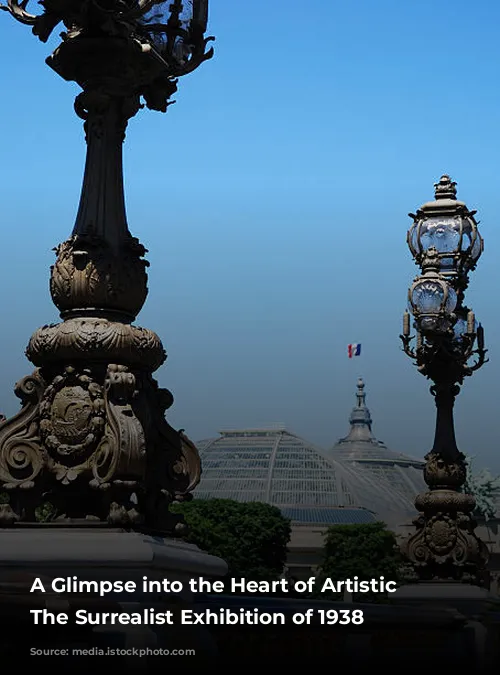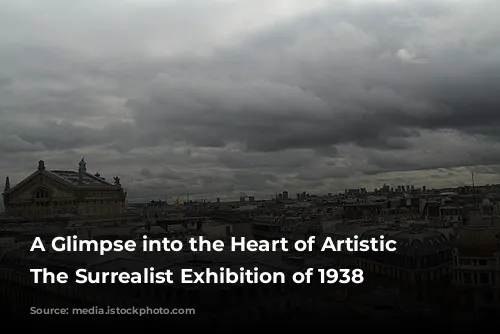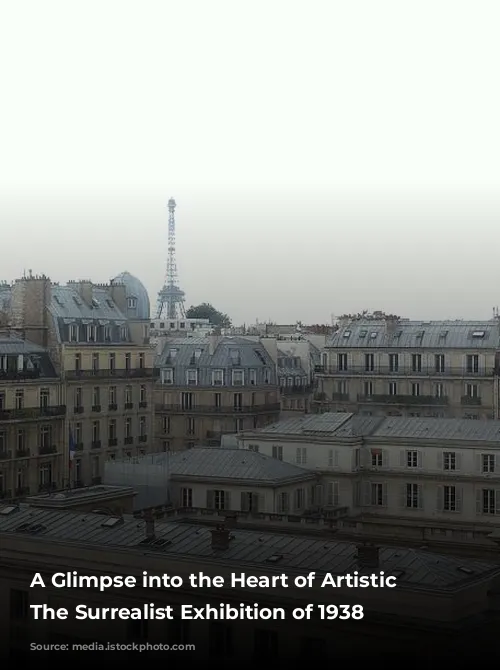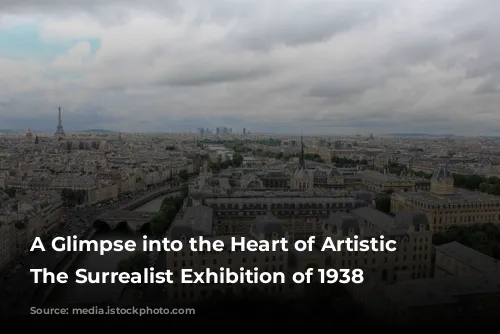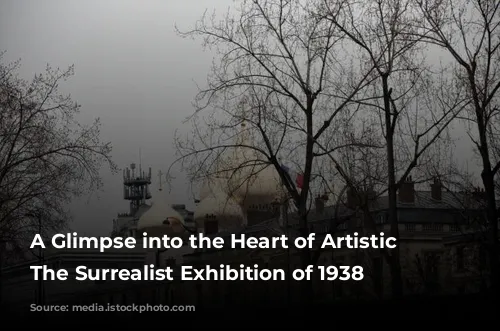The International Exhibition of Surrealism, held in January 1938, serves as a stark reminder of the artistic spirit that thrived amidst a looming darkness. The exhibition was held just as the world teetered on the brink of war. André Breton and Marcel Duchamp, two prominent figures of the Surrealist movement, spoke of the atmosphere with heavy words: “sombre” and “stifling.” Their words serve as a chilling reminder of the anxieties that gripped the world.
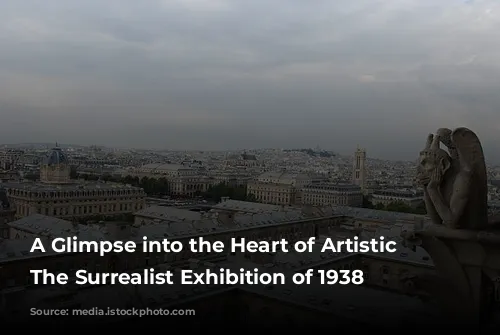
Creative Resilience in the Face of Adversity
Despite the bleakness of the times, creativity continued to flourish. Inside the confines of France’s internment camps, prisons, and later, hiding places, artists forged a path of resistance through their work. These artists, including Bellmer, Brauner, Ernst, Freundlich, Gotko, Gumichian, Hamelin, Kolos-Vary, Lévy, Nussbaum, Payen, Prieto, Rosenthal, Salomon, Soos, Springer, Taslitzky, Warszawski, Wols, and many others, transformed their creative processes and materials in response to their dire circumstances. They used wax, string, stone, music paper, and even packaging, finding inspiration and beauty in the most unexpected places. Their artwork was a testament to their resilience and their defiance against the oppressive forces that surrounded them.
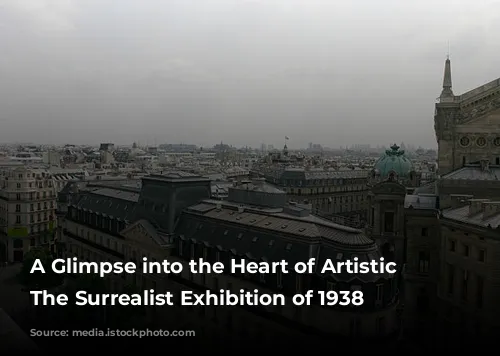
Survival and Struggle Under Nazi Occupation
The outbreak of World War II brought with it the horrors of Nazi occupation and the Vichy regime, marking a new era of darkness for artists. Many were forced to live in hiding, seeking refuge in places like Marseille, Grasse, Sanary, and Dieulefit. Notable among these artists were Arp, Brauner, Sonia Delaunay, Hausmann, Magnelli, Masereel, Räderscheidt, Steib, Taeuber, and Tita.
Meanwhile, the Parisian art scene was dominated by established masters like Matisse, Picasso, Bonnard, and Rouault. These artists were seen as representing the “young painters in the French tradition,” a stark contrast to the radical and often challenging work of the Surrealists. The establishment of the Musée National d’Art Moderne at the Palais de Tokyo in 1942 offered a glimpse into the artistic landscape of the time, which was heavily censored and focused on traditional styles. The “undesirables” – Jews, foreigners, and nonconformists – were largely excluded from the official art scene.
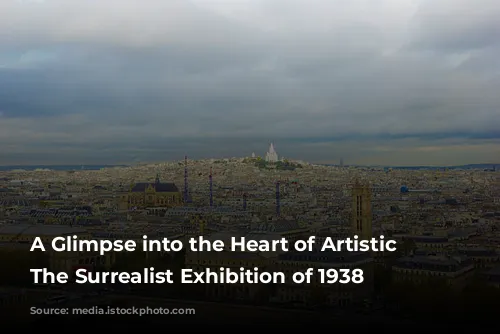
A Beacon of Defiance: Picasso and the “Degenerate” Artists
Despite the oppressive atmosphere, some artists continued to defy the constraints of the time. One such figure was Pablo Picasso, who was banned from exhibiting his work. However, he remained undeterred, working tirelessly in his studio on Rue des Grands-Augustins and producing masterpieces such as “L’Aubade,” “Grand Nu,” “Death’s Heads,” the erotic drawings, “Bull’s Head,” and his play “Desire Caught by the Tail.”
His defiance was echoed by the Galerie Jeanne Bucher, one of the few outlets for work by artists deemed “degenerate” by the Nazi propaganda machine. This gallery showcased the works of Klee, Domela, Kandinsky, and De Staël, artists whose innovative and unconventional styles were seen as a threat to the Nazi ideology.
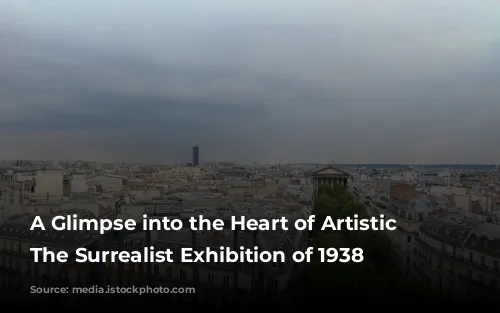
The Birth of New Artistic Movements: A Response to Trauma
The end of World War II marked a new era for art. The works produced in the period between 1944 and 1947 reflected the deep psychological and physical scars of the war. Artists sought to express their pain and their hope for a brighter future through their work, leading to the emergence of new artistic movements.
Some artists, like Fougeron, Herbin, and Pignon, embraced a more traditional style, seeking to “reconstruct” the artistic landscape under the influence of the French Communist Party. Others, like Atlan, Bissière, Debré, Fautrier, Giacometti, Hartung, Leduc, Masson, Richier, Riopelle, Soulages, Schneider, and Tal-Coat, pushed the boundaries of art, exploring tachism, informal art, art brut, lettrism, and the re-purposing of war debris.
These artists sought to express the unrestrained psychic upsurge that followed the war, a response to the trauma of the past and a search for a new way forward. Their works became a powerful testament to the enduring power of art and its ability to process and transcend the complexities of human experience.
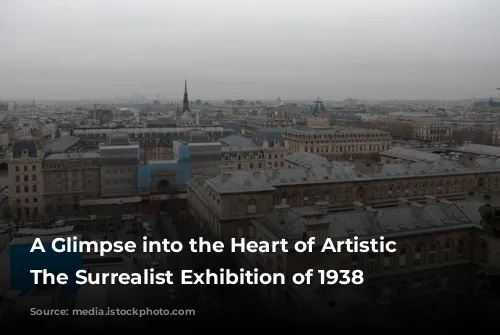
A Celebration of “Alternative” Art
The “alternative” art scene blossomed in the years following the war, finding expression in the works of Artaud, Bryen, Chaissac, Corbaz, Duf, Forestier, Hyppolite, Michaux, Miro, Pujolle, Villeglé, Wols, and many others. This movement embraced the works of “naives” (untrained artists), artists with mental disabilities, and various “ists”.
Jean Dubuffet’s exhibition “Mirobolus, Macadam et Cie, Hautes Pates” at the Galerie Drouin in 1947 became a defining moment in the development of this “alternative” art scene. The exhibition celebrated the unconventional and often disregarded forms of artistic expression, highlighting the power of art to challenge societal norms and broaden our understanding of what constitutes “art.”
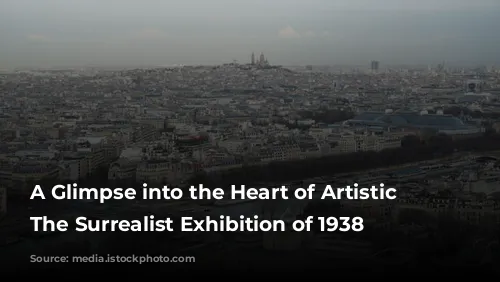
A Legacy of Resilience and Artistic Innovation
The exhibition “Surrealism: Art and War” offers a unique and powerful look at the resilience of art in the face of war. It showcases the works of over 100 artists, including Antonin Artaud, Jean-Michel Atlan, Jean Arp, André Breton, André Bauchant, Willi Baumeister, Jean René Bazaine, Hans Bellmer, Jésus Guillen Bertolin, Roger Bissière, Pierre Bonnard, David Brainin, Georges Braque, Victor Brauner, Camille Bryen, Bernard Buffet, Alexander Calder, Marguerite Caudan, Marc Chagall, Gaston Chaissac, Jean Gabriel Chauvin, Giorgio De Chirico, Aloïse Corbaz, Olivier Debré, Frédéric Delanglade, Sonia et Robert Delaunay, Paul Delvaux, André Derain, César Domela, Jean Dubuffet, Marcel Duchamp, Gaston Duf, Max Ernst, Étienne-Martin, Jean Fautrier, Auguste Forestier, André Fougeron, Otto Freundlich, Alberto Giacometti, Edouard Goerg, Henri Goetz, Julio Gonzales, Jean Gorin, Jacques Gotko, Francis Gruber, Stella Gumichian, Etienne Hajdu, France Hamelin, Hans Hartung, Raoul Hausmann, Jean Hélion, Auguste Herbin, Hector Hyppolite, Srul Jarzembeski, Vasily Kandinsky, Paul Klee, Sigismond Kolos-Vary, Wifredo Lam, André Lanskoy, Charles Lapicque, Henri Laurens, Fernand Leduc, Jean Le Moal, Fernand Léger, Jane Lévy, Myriam Lévy, Jacques Lipchitz, Kurt Löw, Alberto Magnelli, Man Ray, Frans Masereel, Alfred Manessier, André Masson, Henri Matisse, Roberto Matta, Henri Michaux, Joan Miro, Felix Nussbaum, Roger Payen, Francis Picabia, Pablo Picasso, Edouard Pignon, Guillaume Pujolle, Prieto, Anton Räderscheidt, Hans Reichel, Germaine Richier, Jean-Paul Riopelle, Horst Rosenthal, Georges Rouault, Le Douanier Rousseau, Charlotte Salomon, Gérard Schneider, Serpan, Joseph Soos, Pierre Soulages, Chaïm Soutine, Ferdinand Springer, Nicolas de Staël, François Stahly, Giordano Stroppolo, Boris Taslitzky, Joseph Steib, Sophie Taeuber-Arp, Jotz Taitz, Pierre Tal-Coat, Tita, Julius Turner, Raoul Ubac, Vago, Bram Van Velde, Victor Vasarely, Vieira da Silva, Yves Tanguy, various unknowns, Jacques Mahé de la Villeglé, Maurice de Vlaminck, Gérard Vulliamy, Abram Warszawski, Arthus Weisz, Wols, and others.
The exhibition’s catalogue, a comprehensive 400-page guide published by Paris Musées and edited by Laurence Bertrand Dorléac and Jacqueline Munck, provides an insightful look into the lives and work of these artists. With contributions from over 140 international critics, the catalogue offers a rich and nuanced understanding of the artistic landscape of the time.
The “Surrealism: Art and War” exhibition serves as a powerful reminder of the enduring power of art in the face of adversity. It demonstrates the ability of artists to transform their experiences, both personal and collective, into works of beauty and defiance. The exhibition is a testament to the resilience of the human spirit and the ability of art to inspire, challenge, and transcend the boundaries of time.
